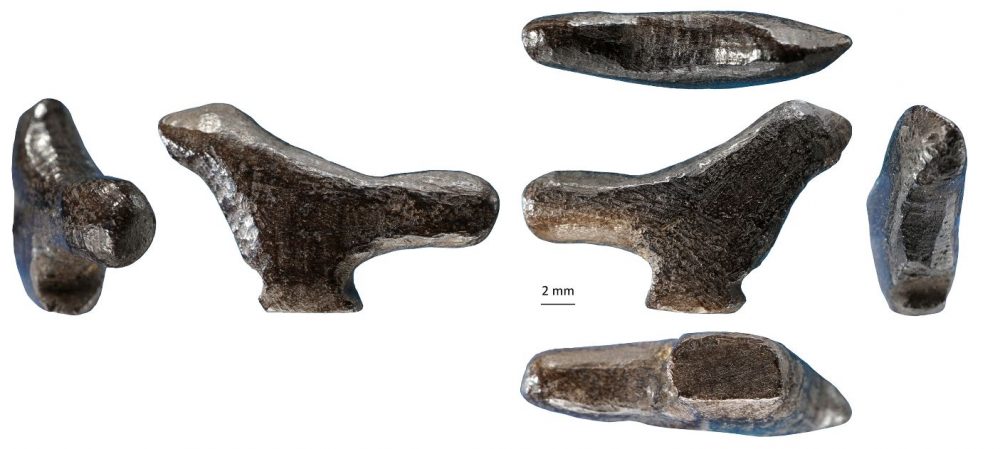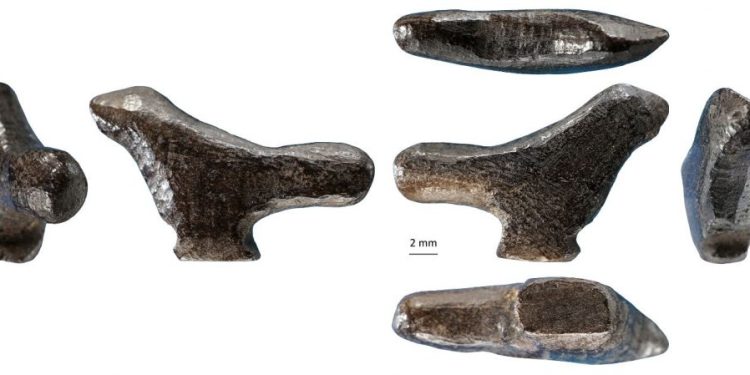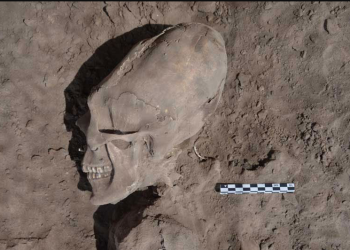A 13,000-year-old statue discovered in China is now regarded as the oldest statue ever discovered in the Asian country to date.
Carved from burned bone, the miniature bird statuette has become the oldest known Chinese and East Asian three-dimensional work of art, dating back around 13,000 years.
European mammoth ivory carvings of animals and humans dating back 40,000-38,000 years are the earliest examples of prehistoric humans depicting the world around them three-dimensionally, although due to lack of evidence, it is unclear when this type of three-dimensional representation became part of the cultural repertoire of prehistoric groups from the rest of the world.
In this study, published in PLOS ONE, Zhanyang Li of Shandong University and colleagues describe the remarkable discovery of a small standing bird statuette discovered at the Lingjing Paleolithic site in Henan, China. Its existence offers new information and data that can help scientists better understand the history of three-dimensional art and its origins and evolution.
During Li’s initial excavation at Lingjing in 2005, the researcher discovered eleven different layered layers ranging from 120,000 years ago to the Bronze Age and found that most of the fifth layer had been removed during a well-digging operation in 1958, potentially losing many historical artifacts.
Luckily for Li, the pile of material that was excavated from the well remained nearby and was largely intact.
After sifting the sediments from the trash pile, the authors discovered black flint identical to what was left of Layer 5 at the excavation site.
They also discovered various artifacts, including ceramic sherds, burned animal remains, and the figurine of a bird, which is carved from bone and shaped like a songbird on a pedestal.

Using radiocarbon dating on the discovered burned animal remains (including a bone with anthropogenic groove marks also observed in bird carving), the authors were able to estimate the age of the bird statue and associated bone material to be between 13,400 and 13,200 years.
Based on evidence from other North China sites of similar age, this suggests that hunter-gatherers with stone tool technologies were living at the site around 13,000 years ago, and were responsible for carving the artistic representation of the bird.
The illustration of birds in Chinese art holds a special place. Bird representations are a theme in Chinese Neolithic art, with the oldest example of a jade songbird dating back approximately 5,000 years.
The Lingjing Paleolithic bone bird figure predates, by nearly 8,500 years, other previously known instances of this region and has several technological and stylistic elements that set it apart from contemporary representations of bird-like creatures from Western Europe and Siberia (such as the pedestal on which the Lingjing bird is perched).
“Microscopic and microtomographic analyses of the figurine and the study of bone fragments from the same context reveal the object was made of bone blackened by heating and carefully carved with four techniques that left diagnostic traces on the entire surface of the object,” the researchers revealed in their study.
Although more examples of Paleolithic carvings are needed to confirm this possibility, the Lingjing bird figurine suggests the presence of a long specific East Asian artistic tradition, with much earlier origins in the Paleolithic.
“This discovery identifies an original artistic tradition and takes the representation of birds in Chinese art back more than 8,500 years,” the authors of the study revealed.
The figure differs technologically and stylistically from other specimens found in Western Europe and Siberia, and it could be the missing link that traces the origin of Chinese statuary art back to the Paleolithic.”
Join the discussion and participate in awesome giveaways in our mobile Telegram group. Join Curiosmos on Telegram Today. t.me/Curiosmos











